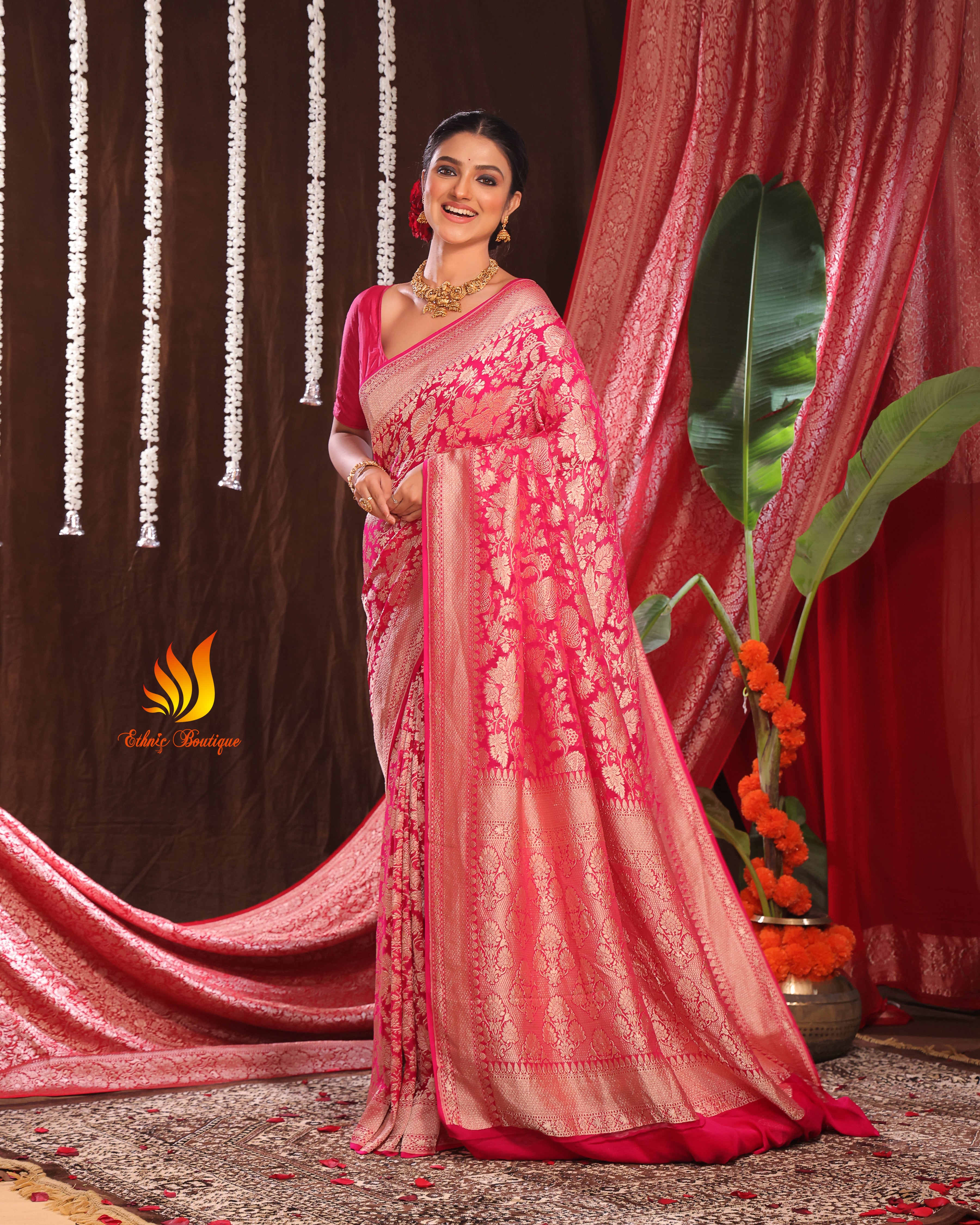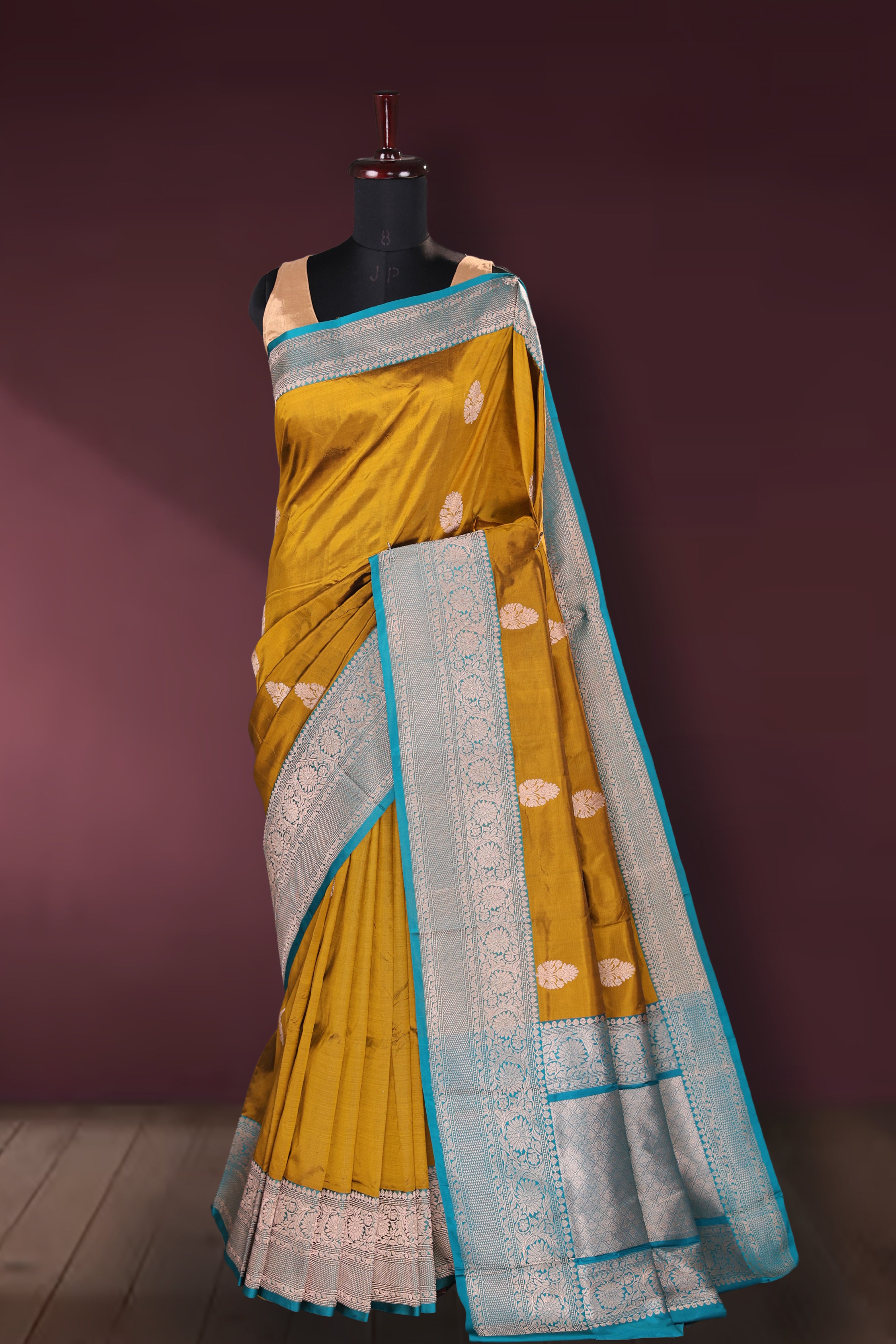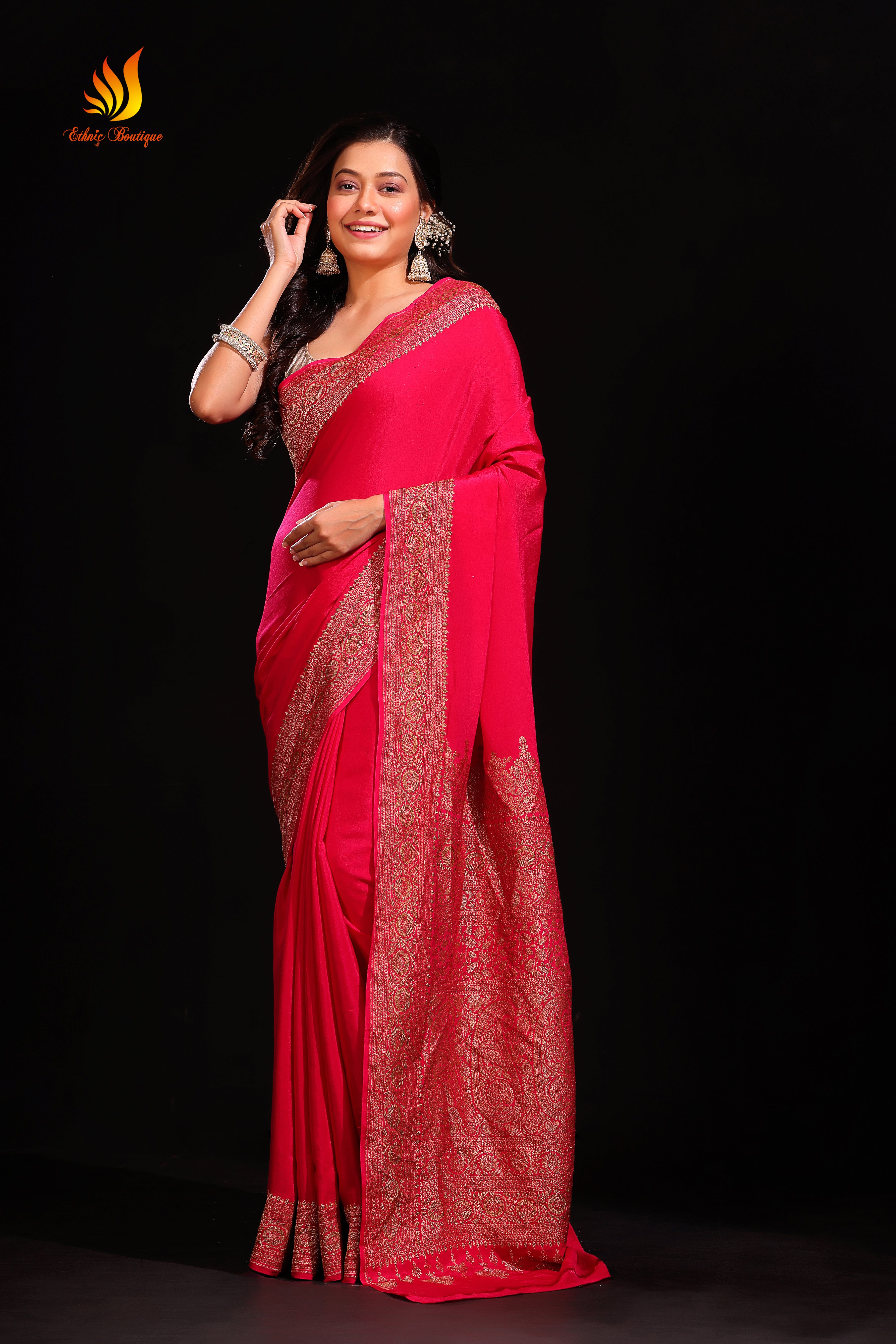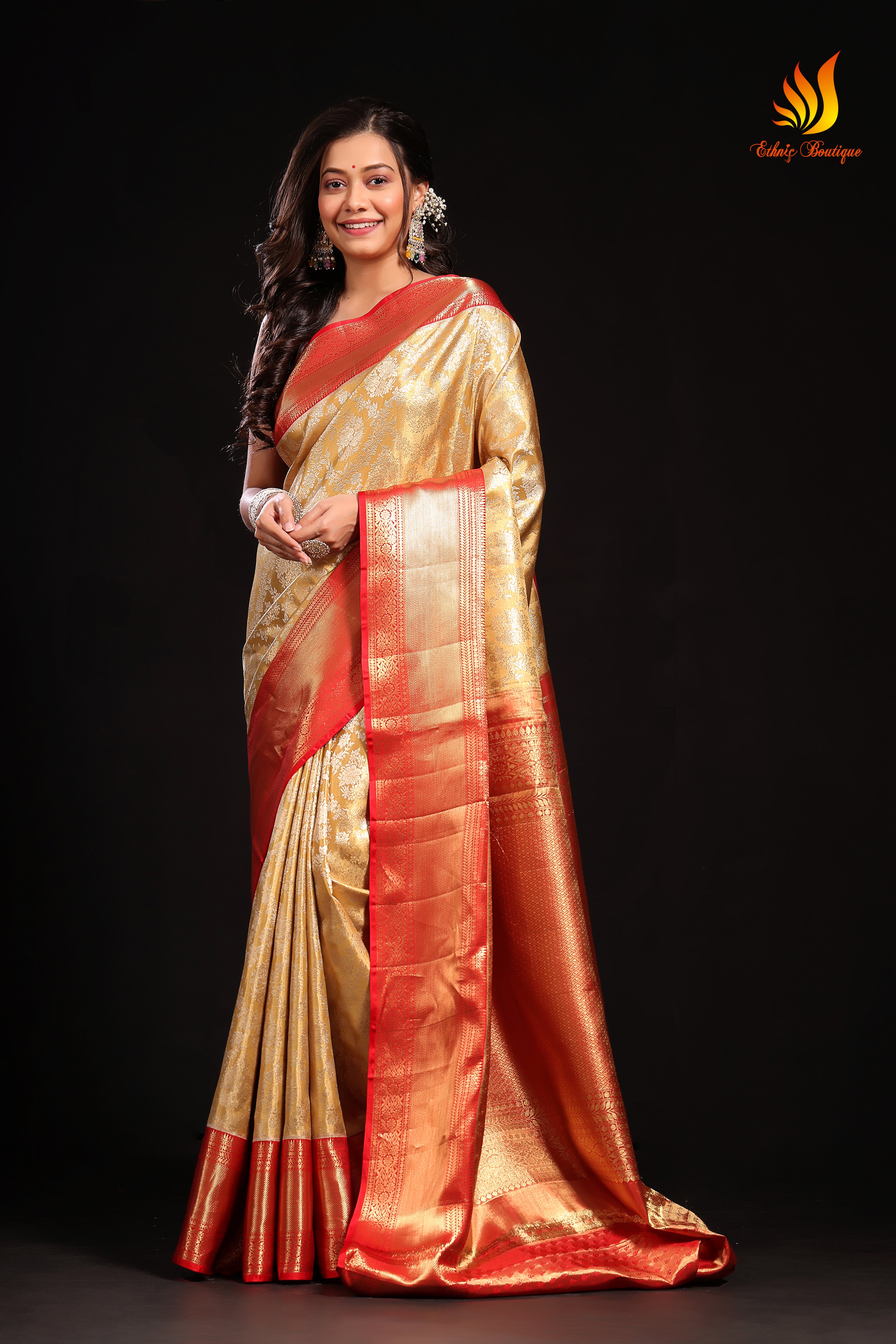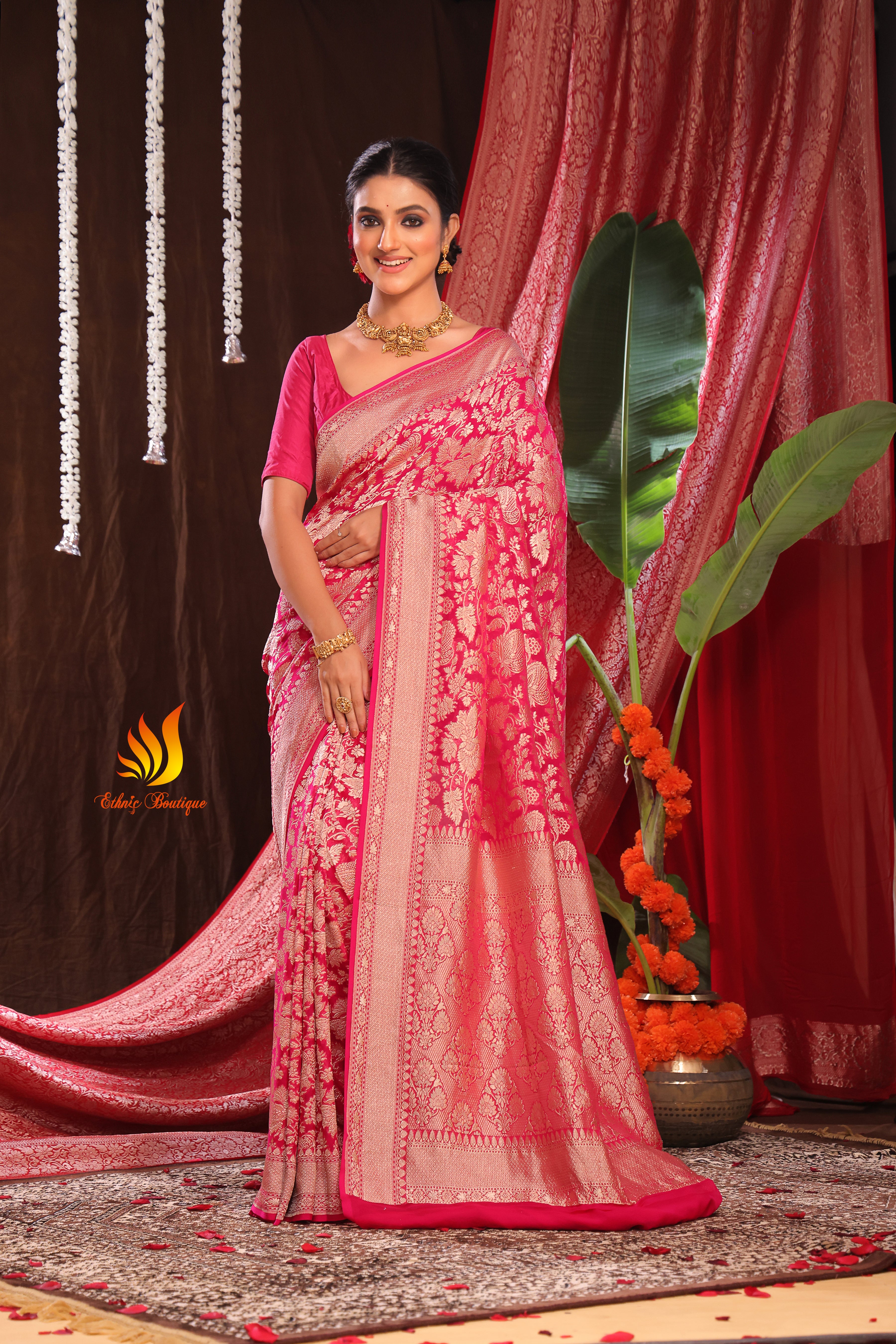"Tussar Digital Banarasi" refers to a saree that is a fascinating blend of different textile traditions, combining the unique characteristics of Tussar silk, the weaving artistry of Banaras, and the modern technique of digital printing.
Here's a breakdown:
-
Tussar Silk:
-
Wild Silk: Tussar silk, also known as "Kosa silk," is a wild silk produced from the larvae of silkworms that live on trees like Arjun, Asan, and Sal, primarily found in the tribal regions of Jharkhand, Chhattisgarh, and West Bengal (India).
-
Distinct Texture and Sheen: Unlike mulberry silk, tussar has a natural, coarse, and slightly uneven texture, giving it a rustic yet elegant feel. It's known for its natural golden sheen, which can range from a subtle matte luster to a more pronounced shine.
-
Breathable and Lightweight: Tussar silk is generally lighter and more breathable than other silks, making it comfortable to wear, especially in warmer climates.
-
Banarasi:
-
Weaving Hub: Banaras (Varanasi) in Uttar Pradesh, India, is world-renowned for its intricate silk weaving, particularly for Banarasi sarees.
-
Zari Work and Motifs: Traditional Banarasi sarees are characterized by rich brocade work using metallic zari threads (gold or silver, or their imitations) to create elaborate patterns. These designs often draw inspiration from Mughal art, featuring floral motifs (like kalga and bel), intricate jaals (net patterns), and geometric designs.
-
Handloom Craftsmanship: Authentic Banarasi sarees are typically handwoven, a meticulous and time-honored process that requires immense skill and precision.
-
Digital Print:
-
Modern Technique: Digital printing is a contemporary method of applying designs to fabric using specialized digital printers. This allows for:
-
High Resolution and Detail: Extremely intricate and detailed designs, including photographic prints, fine art reproductions, and complex color gradients, can be accurately transferred onto the fabric.
-
Vibrant Colors: A wide spectrum of colors can be used, offering more design flexibility than traditional weaving or block printing.
-
Contemporary Aesthetics: Digital printing allows for modern, abstract, or even whimsical patterns that might be difficult or impossible to achieve with traditional weaving techniques.
Combining them:
A "Tussar Digital Banarasi" saree, therefore, represents a fusion:
-
Fabric Base: It uses the unique texture and earthy charm of Tussar silk as its base.
-
Traditional Influence: It often incorporates Banarasi-inspired motifs or elements in its design. This might be through woven zari borders or pallus, or the digital prints themselves could mimic traditional Banarasi patterns.
-
Modern Design Application: The intricate designs on the body of the saree are applied using digital printing, offering a contemporary twist to the traditional silk. This allows for diverse and vibrant patterns that complement or contrast with any traditional zari work.
Why this blend?
This combination offers several advantages:
-
Unique Aesthetic: It creates a saree that is both rooted in tradition (Tussar silk, Banarasi motifs) and modern in its visual appeal (digital prints).
-
Versatility: The lighter weight of tussar makes it comfortable for various occasions, while the digital prints can range from subtle to bold, making it suitable for both casual elegance and festive wear.
-
Cost-Effectiveness (sometimes): While pure handwoven Banarasi tussar can be quite expensive, the integration of digital printing might offer more accessible price points for beautiful designs.
In summary, a Tussar Digital Banarasi saree is a beautiful example of how traditional Indian textiles are evolving, incorporating modern techniques to create fresh and appealing designs while retaining the essence of their rich heritage.

